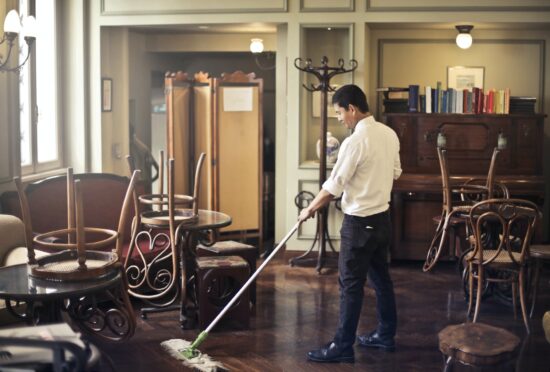Your Comprehensive Guide to Bar Opening and Closing Procedures

Bar opening and closing procedures are fundamental to the smooth operation of any successful establishment. These procedures not only ensure the cleanliness and safety of your bar but also create a welcoming atmosphere for your patrons. Let’s delve into the detailed steps involved in opening and closing your bar effectively.
Opening Your Bar | Set the Stage for Success
Opening a bar is a crucial phase in your daily operations. It involves more than just unlocking the doors — bar opening procedures are about meticulously preparing your establishment to deliver an exceptional customer experience.
Here’s a sample bar opening checklist — a comprehensive breakdown of the key opening procedures:
1. Exterior Inspection and Curb Appeal
Begin by carefully inspecting the exterior of your bar. Remove any debris or litter that may have accumulated overnight. Sweep the sidewalks and entrance area, ensuring they are clean and inviting. Examine the exterior lighting, signage, and any outdoor seating areas, making any necessary repairs or adjustments. Address any potential hazards, such as uneven pavement or broken fixtures, to ensure the safety of your patrons.
2. Interior Preparation and Ambiance
Upon entering, turn on all interior lights, creating a warm and welcoming atmosphere. Stock the ice bins to ensure an ample supply for chilled beverages. Line all trash cans with fresh liners to maintain cleanliness. Thoroughly clean and sanitize the bathrooms, ensuring they are stocked with soap, paper towels, and toilet paper. Check the air conditioning or heating system to ensure a comfortable temperature for your guests.
3. Bar Setup and Organization
Arrange seating areas, including bar stools, tables, and booths, to maximize space and comfort. Polish all glassware and silverware to a sparkling shine, creating a visually appealing presentation. Set up bar tools and equipment, such as shakers, strainers, muddlers, and jiggers, in an organized and easily accessible manner. Lay down non-slip floor mats behind the bar to prevent accidents and ensure the safety of your staff.
4. Inventory and Supply Management
Stock the bar with a sufficient supply of bottled beverages, including beer, wine, spirits, and non-alcoholic options. Ensure an adequate supply of essential service accessories, such as straws, napkins, stirrers, coasters, and garnishes. Dust all bottles to maintain a clean and professional appearance. Refill condiment containers, such as salt, pepper, sugar, and hot sauce, to avoid running out during service.
5. Beverage Preparation and Readiness
Sanitize all tap caps and thoroughly clean beer faucets to ensure the hygiene and quality of draft beverages. Prepare fresh juices, such as orange, cranberry, and grapefruit, to enhance your cocktail offerings. Pre-cut and arrange garnishes, such as lemon wedges, lime wheels, and cherries, for efficient drink preparation. Check the levels of all bottles and kegs, and replace any that are running low to prevent disruptions during service.
6. Financial Preparation and Cash Handling
Carefully count and verify the starting cash in each cash drawer, ensuring accuracy and accountability. Assign cash drawers to specific staff members to streamline transactions and maintain financial control. Ensure that the safe is securely locked and that all financial documents are organized.
By meticulously following these comprehensive opening procedures, you create a well-prepared and inviting environment for your patrons. This attention to detail not only sets the stage for a successful and efficient day of bar operations but also reinforces your commitment to providing an exceptional customer experience.
Closing Your Bar | For a Clean and Secure Environment
Bar closing procedures are just as crucial as the opening sequence, creating a seamless transition for tomorrow’s shift. By following these meticulous steps, you’ll leave your bar spotless, organized, and secure. Here’s a sample bar closing checklist — your key to best practices in closing procedures:
1. Financial Reconciliation
Thoroughly count and balance all cash registers, meticulously recording each transaction. Prepare the day’s bank deposits, ensuring all cash and checks are accounted for. Distribute tips earned by your staff according to your establishment’s policy. Secure all remaining cash, checks, and financial documents in a designated safe.
2. Bar Breakdown and Organization
Properly store all perishable items, such as mixers, garnishes, fruits, and bar snacks, in designated refrigerators or storage areas. Organize menus, ensuring they are clean and presentable for the next shift. Label all fresh ingredients with the date of preparation to maintain freshness and avoid spoilage.
3. Thorough Cleaning and Sanitation
Clean and sanitize all surfaces, including countertops, tables, bar stools, floors, and bathrooms. Pay special attention to high-touch areas. Thoroughly clean all glassware, mix-ware, and bar tools, ensuring they are spotless and ready for use. Don’t neglect the areas behind the bar! Clean and sanitize appliances, floors, bar mats, drains, sinks, and beverage dispensing systems.
4. Waste Disposal and Restocking
Empty all trash bins and dispose of waste properly. Vacuum or sweep the floors to remove any debris. Replenish disposable items like napkins, straws, stirrers, and coasters to adequate levels. Check inventory levels and restock any depleted supplies, ensuring a smooth start for the next day.
5. Linens and Electronics
Store all unused linens in designated storage areas. Gather all used linens and towels and place them in the appropriate laundry bins. Power down all electronic devices, including TVs, music systems, and any decorative lighting.
6. Security Measures
Activate the security alarm system, if applicable. Lock all doors and windows to safeguard the premises. Double-check all entry points to ensure they are secured before leaving.
By diligently following these closing procedures, you create a welcoming and well-maintained environment for your staff and guests, ensuring a successful start to each day.
And Don’t Forget Weekly Maintenance!
In addition to daily opening and closing procedures, certain tasks should be performed weekly to maintain the bar’s overall condition. These include rotating glassware, dusting displays and unused bottles, cleaning neon signs, and sanitizing keg lines. Thoroughly cleaning grills and prep areas, sweeping under appliances, and organizing drawers and cabinets are essential weekly tasks to prevent pest infestations and ensure efficient kitchen operations.
Bar Opening and Closing Checklists | Your Tools for Success
To streamline your bar opening and closing procedures, consider using checklists like the ones provided by resources such as Manifest, WebstaurantStore, Diageo Bar Academy, and BevSpot. These checklists serve as valuable reminders and ensure that no task is overlooked.
Empower Your Staff With Training and Certification
Equipping your staff with the knowledge and skills necessary for proper bar operations is crucial. TABC On The Fly offers the online TABC certification course that educates staff on best practices when selling or serving alcohol in the state of Texas.
Our Bar Opening and Closing Procedures for a Thriving Business
Efficient bar opening and closing procedures are the backbone of a well-run establishment. By adhering to comprehensive checklists, training your staff, and utilizing resources like TABC On The Fly, you can ensure that your bar operates smoothly, maintains a clean and safe environment, and ultimately thrives in the competitive hospitality industry. Remember, a well-executed opening sets the stage for success, and a thorough closing prepares your bar for another day of exceptional service.
Back to Blog